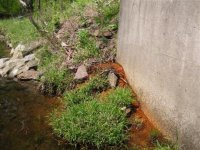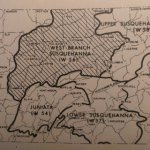duckfoot wrote:
Interesting that Muncy Creek is a Catskill drainage basin.
I would argue that headwater geology matters more important for water pH because the majority of these freestone streams have rain as their primary source. Rain falls onto the long-eroded (via plants and trees) ground and rock, and seeps those acidic qualities into the water.
Bedrock further downstream has much less surface area over a stream's water capacity than does the ground that the rain made first contact.
Groundwater sources (usually come from limestone) are more suited for supporting trout populations.[/quoteMuncy Creek is not in the Catskill Drainage Basin, it's a geologic formation the 2 are very different.
For instance many streams flow off of infertile headwater geology and when they flow down below certain formations, they gain PH, particularly when they flow over the Catskill Formation, which is more fertile. Many NC streams start in less fertile geology and then as they flow through lower elevations cross over the Catskill Formation. Once they flow through the Catskill they become much more fertile as a stream and fishing can be quite good.
You'll see this in the rocks, many of the streams in the Anthracite regions start on the Plateau where there is pink white and pale gray rock, these streams are very infertile, Northkill is one like this, as well as many of the streams going north from there into Schuylkill County. Northkill has a T Alc of near 0, and is infertile. Even though it is it has a good brookies population throughout. It never crosses the Catskill Formation, but is does cross the limestone valley south of Blue Mountain, and is fed by many limestones spring, large and small and so becomes fertile from around the crossing of I78 south.
In NC PA streams in the Pine Creek Drainage can have very infertile headwaters, but flow through the Catskill Formation and are eventually very fertile. You can see it in the sediment on the stream bottoms, there is a lot of red rock in the streams indicating fertility.








